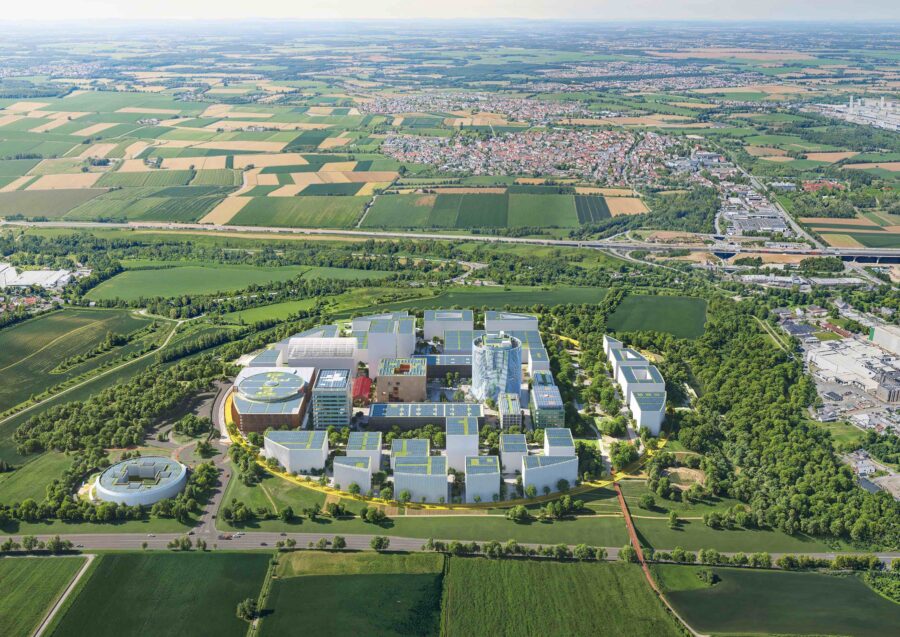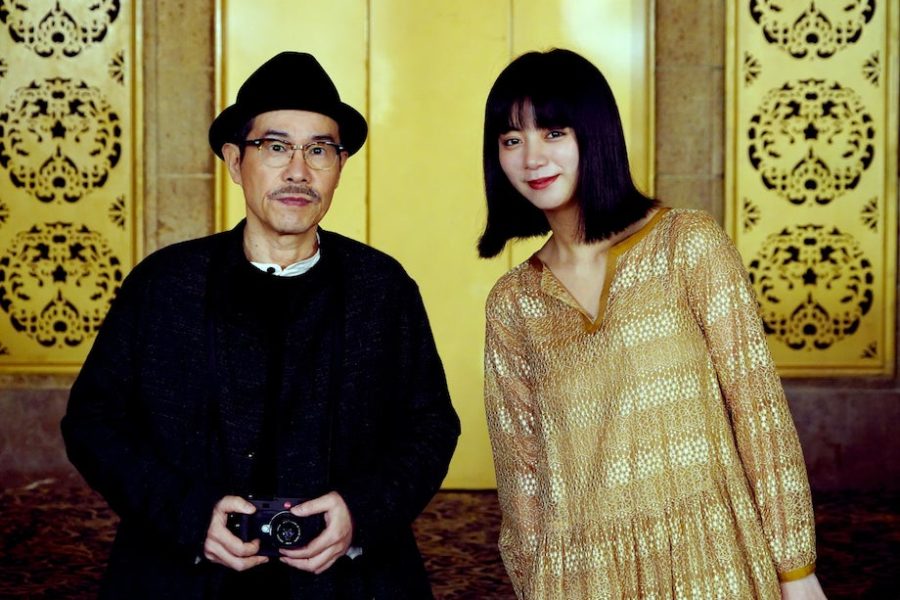
CULTURE


©︎ Onnis Luque
メキシコの都市トゥルテペックに建つ〈バランカ・デ・サン・マルコス展望台(Viewpoint Barranca de San Marcos)〉は、都市改善プログラムにより地域の重要なエリアを整備することで、都市の改善と経済回復を目指したプロジェクトです。
土地に溶け込むマテリアルといつでも通行可能なテラスを介した歩道により、地形そのもののように生活動線として通り抜けることができます。運動施設や図書館、この地の変化を見守る展望台を備え、ゴミ捨て場であったこの場所を地域の中心地とするために設計されています。
メキシコの設計事務所 ミゲル・モントール建築ワークショップ(Taller de Arquitectura Miguel Montor)が設計しました。
(以下、Taller de Arquitectura Miguel Montorから提供されたプレスキットのテキストの抄訳)

Isometric

©︎ Onnis Luque
建築と都市計画により地域の抱える社会問題の解決を目指す都市改善プログラム
このプロジェクトは、長年にわたり国内外での経済活動の中心であった花火事業で知られる発展途上の自治体である、メキシコのトゥルテペックにて行われているプログラムの一部である。
メキシコの農業・領土・都市開発省(SEDATU)による徹底的な調査の結果、この自治体には都市改善プログラム(PMU)の適用の必要性が生じた。このアプローチの下、同省は都市計画局と連携し、地域の重要なエリアを整備することで、都市の改善と経済回復の実現を目指した。

©︎ Onnis Luque

©︎ Onnis Luque
また、パンデミック後の経済復興に向けた要請の一環として、プロジェクトの建設には地域の労働力を奨励することによる雇用の創出が提案された。
この都市改善計画には、社会文化的・教育的な側面がある。建築と都市計画を通じて、社会が抱える問題を解決し、暴力や治安の悪化、破壊行為などの問題を最小限に抑えようとするものである。この地域特有の問題は、土地の放棄や悪用を引き起こす。そのため、この地域を回復させるために、文化・スポーツ複合施設の建設が提案された。

©︎ Onnis Luque

©︎ Onnis Luque
ゴミ捨て場であった場所を地域の中心地とするためのプログラム
渓谷に位置するこの土地は、以前はゴミ捨て場として利用されていた。
そこで、地域の文化・レクリエーション・スポーツ発展のために、近隣地域の中心地となるような分かりやすいプログラムをつくりたいと考え、多目的コート、マルチワークショップ、図書館、守衛所が設けられた。

©︎ Onnis Luque
地形のように歩くように通行する、テラスによってつながる動線
敷地へのアクセスの悪さを考慮し、適切なつながりを生み出すための複数のアクセス経路を設けた。地形を理解すると、テラスによってプロジェクトを形づくる可能性が生まれた。開放的な場所であるため、テラスやバルコニーを通した自然なルートにより人々の流入を生み出す。
建物は夜間には密閉され、日中は開放されるように設計されているが、歩道は開放されたままなためいつでも通行することができる。

©︎ Onnis Luque
土地に溶け込むマテリアル
都市環境にプロジェクトを埋め込むことの意義を踏まえ、私たちは建築がその場所に溶け込み、その場所の一部であると感じられるようにしたいと考えた。
そのため、アースカラーで彩色されたコンクリート、スチール、そして既存の土を砕いたものを使用した。この洗練された素材パレットにより、展望台から眺めたとき、プロジェクトが視覚的にこの場所のコンテクストに溶け込むことができる。

©︎ Onnis Luque
この地の変化を見守る展望台
高所に位置するため、敷地からの眺望には大きな価値があり、この場所の変化のシンボルとして展望台をつくることとした。この展望台は、人々が25mの高さまで登ってパノラマビューを見渡せるようにするものであり、いつもの街を違った視点から捉えることができる場所となる。
また、公共空間であるこのプロジェクトには、塀などのような制限的な境界を設けることはできないと考えた。ファサードは、ガラスとスチールの2層構造になっている。可動式の間仕切りとしてデザインされたドアにより、1日を通して変化する光と影の戯れを生み出す。

©︎ Onnis Luque

©︎ Onnis Luque
近隣の住宅は、このプロジェクトに向かって眺望を得ることができるようになり、ファサードや窓、バルコニーを開放することで、近隣地域の中心地を形成することができる。私たちの構想では、このような中心地をつくることが都市生活を促進すると考えている。
私たちは、このような丘陵地であっても、誰もが訪れやすくアクセスしやすいプロジェクトを実現し、住民がその中を歩きながら帰属意識をもてるようにすることを目指している。

©︎ Onnis Luque
プロジェクトの景観の一部として、地面を時間をかけて覆っていくよう、地面を這うような樹種や低木を植えた。また、床を透水性のものとすることで、意図的に水を誘導し、プロジェクト全体で自然に排水できるようにした。
最後に私たちは、このようなプロジェクトが活用されることで、遊び心と教育的なアプローチを備えた都市の表現装置としての建物が徐々に生み出されていくと信じている。

©︎ Onnis Luque

Plan

Section

Section

Viewpoint Plan

Viewpoint Section
以下、Taller de Arquitectura Miguel Montorのリリース(英文)です。
September 2022
Project Description
Viewpoint Barranca de San Marcos Tultepec, State of Mexico, Mexico.This project is part of a program planned for the municipality of Tultepec, State of Mexico. A developing entity recognized for its work with the manufacture and detonation of pyrotechnic fireworks, which for many years has been the focus of economic activity at a national and international level. After a thorough sector study by the Ministry of Agrarian, Territorial and Urban Development (SEDATU), necessities arose within the framework of the Urban Improvement Programs (PMU) of this entity. Based on this approach, the Ministry, together with the department of urban planners, intended to equip areas of interest in this locality, in order to achieve urban improvement and economic recovery. As part of the request for post-pandemic economic recovery, it was stated that throughout the construction of the projects, local labor and manual work would be encouraged in order to generate sources of employment.
This Urban Improvement Program has a socio-cultural and educational approach. Through architecture and urban planning, society’s problems are addressed, and with these tools we intend to raise the educational level of the population and thus minimize problems such as violence, insecurity and vandalism. Thus, the construction of a cultural-sports complex was proposed in order to rehabilitate this area.
Since it is located in a ravine, the land used to be a garbage dump, so the initiative wanted to create a straightforward program that would generate a community center for the development of sports, cultural and recreational activities for the community. Providing them with a multi-purpose court, a multi-workshop, a library and a surveillance booth.
Addressing the lack of existing accessibility to the area, the design included multiple entrances in order to create an ideal connection. As it is an open plan, the affluence of people will generate natural pathways through terraces and balconies that will generate weaving between streets. Once we were able to understand the terrain, a possibility arose, to shape the project through terraces. Being located at a considerably high point, there is a view from the site that is of great value, so we decided to create a viewpoint as a symbol of change in this site. This structure will allow people to climb to a height of 25 meters where they will have a panoramic view, from which they will be able to perceive differently this entity, simultaneously it will generate a point of reference to the town. This dual function means that from far away from the complex attracts the view, and at the same time from the viewpoint can be seen outwards. Being a public space, we decided that this project would not have restrictive boundaries, with blind spots or walls on the border.
Considering the importance derived from embedding the project within an urban setting, we wanted the project to mimic and feel part of the place to which it belongs. This vision led us to propose that the materials should respond to the site, so we used apparent concrete pigmented in natural earth tones, steel and grinded rock from the soil. The noble material palette allows the project to be visually incorporated into the context when viewed from the lookout point.
The pavilions are designed to be hermetically sealed at night and opened during the day; however, the walkways will remain open so that they can continue to be used as a trail as they are walkable at all times. These pavilions have two tiers on the facades, one of glass and the other one of steel. We designed the doors to have movable partitions to create different perceptions of light and shadow throughout the day. On the other hand, when perceiving the panels in different layers of the building, we sought a sense of lightness that would be accentuated by the variable section roof slab.
The surrounding houses will now have a direct view of the project, which will allow them to open facades, windows and balconies, creating a neighborhood center. In our vision, generating a center of this sort encourages urban life. We seek to achieve a visitable and universally accessible project, even in such a mountainous place, allowing the population to take ownership of it when they walk through it. As part of the efforts to boost a point of attraction in the municipality we generated an appealing entrance by providing a benefit to the access street at the entrance of the complex.
The landscape of the project included the presence of scrub and bush species, with the intention that over time they would cover the ground. We also contemplated that the floors would be permeable so that water could be intentionally directed and drain naturally throughout the project.
Finally, we are convinced that through the appropriation of projects of this type, urban development will gradually generate articulators with a playful and educational approach in these growing municipalities.
CREDITS
Lead architect: Miguel Montor
Design team: Pilar Rico, Hugo Mejía
Structure: Juan José Larios
Instalations: Uriel García
Client: S.E.D.A.T.U. Secretaría de Desarrollo Agrario, Territorial y Urbano
Photographs: Onnis Luque
Taller de Arquitectura Miguel Montor 公式サイト
http://www.miguelmontor.com/index/




![[大阪・関西万博]国内パビリオン紹介_飯田グループ×大阪公立大学共同出展館](https://magazine-asset.tecture.jp/wpcms/wp-content/uploads/2025/06/27155217/rimg04_download-900x675.jpg)




